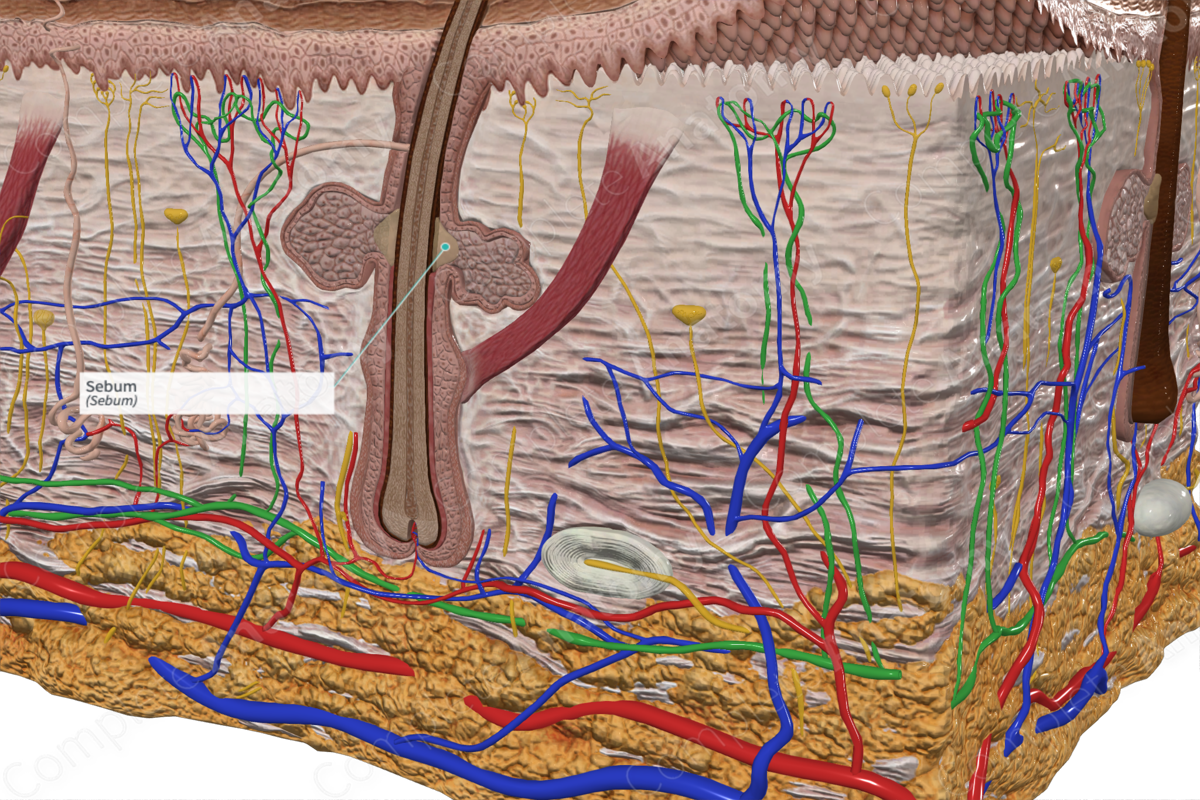
Quick Facts
Sebum is the secretion of the sebaceous glands, a thick, semifluid substance composed of fat and epithelial debris from the cells of the malpighian layer (Dorland, 2011).
Structure/Morphology
Sebum is the oily lipid substance produced by the sebaceous glands of the hair follicle. Sebum is primarily composed of a combination of proteins, cholesterol, and triacylglycerides, among other substances. Sebum is excreted from the sebaceous glands through holocrine secretion, a process in which the glandular cells burst in order to release the secretory products. This results in the sebum containing cellular components among the secretory products. The contraction of the arrector pili muscle will force the sebum through the gland opening into the hair follicle and subsequently onto the skin surface (VanPutte et al., 2015, Picardo et al., 2009).
Function
The sebum functions as a lubricant for the hair and the exposed surface of the skin, protecting the keratin of the hair and the skin by preventing drying of the tissues. In addition, sebum contributes to antimicrobial activity and photo protection of the skin (Picardo et al., 2009).
References
Dorland, W. (2011) Dorland's Illustrated Medical Dictionary. 32nd edn. Philadelphia, USA: Elsevier Saunders.
Picardo, M., Ottaviani, M., Camera, E. and Mastrofrancesco, A. (2009) 'Sebaceous gland lipids', Dermato-endocrinology, 1(2), pp. 68-71.
VanPutte, C. L., Regan, J. L. and Russo, A. F. (2015) Seeley's Essentials of Anatomy and Physiology. McGraw-Hill Education.
